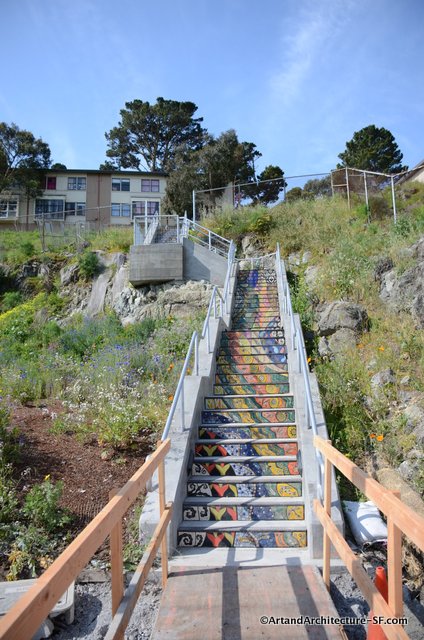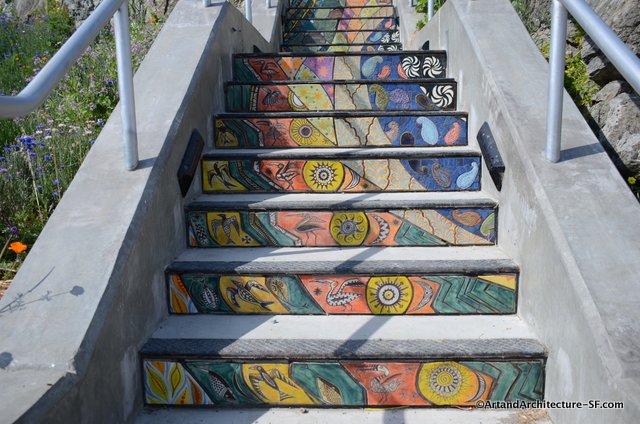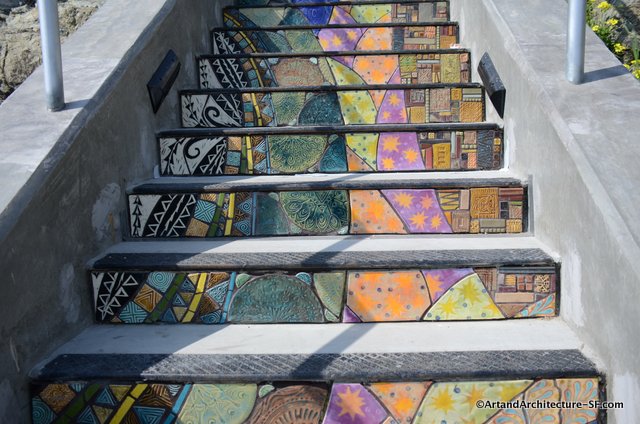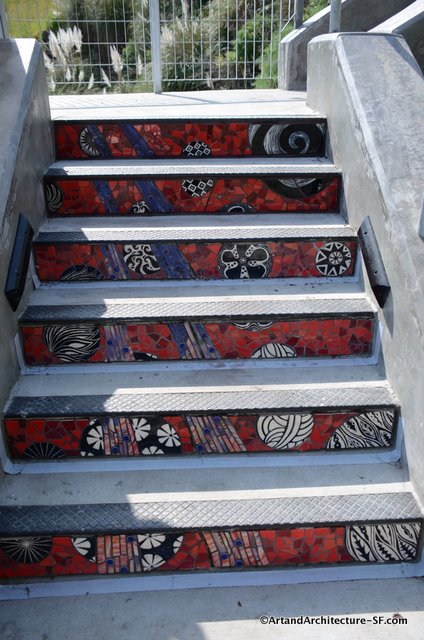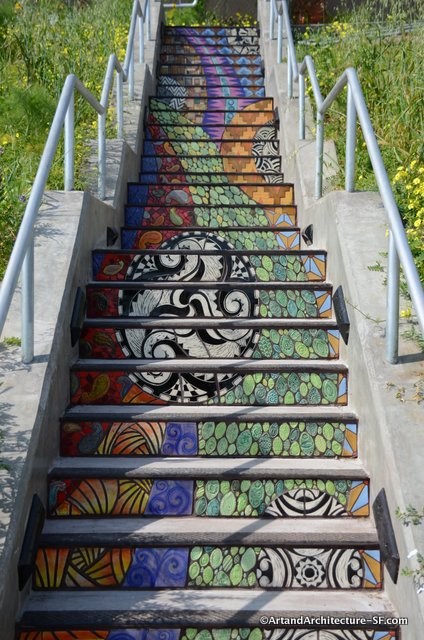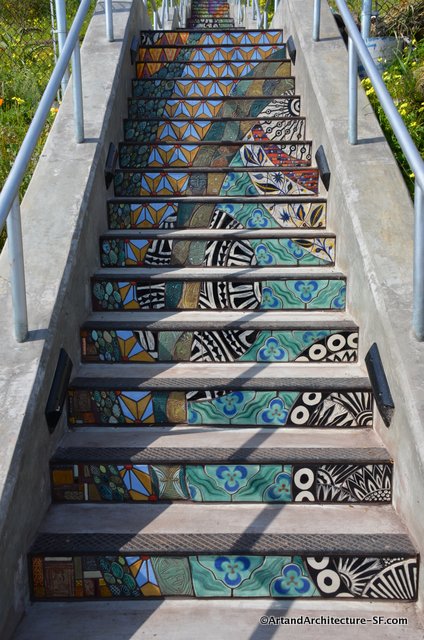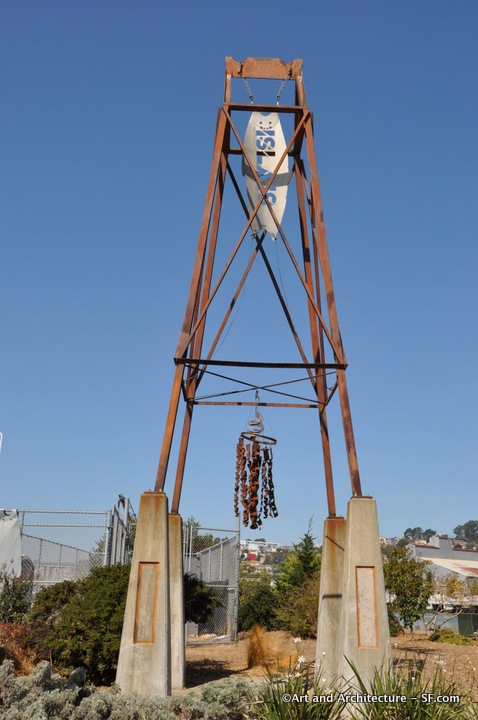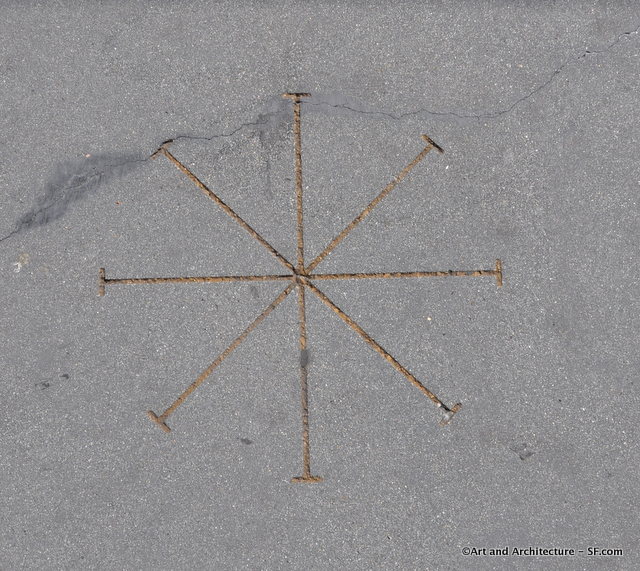Innes Avenue
Bay View / Hunters Point
This was the proposal that was written for the Call for Artists by the SFAC:
The Arelious Walker Drive Stair replacement is a dynamic community project in partnership with the San Francisco Redevelopment Agency and the Department of Public Works to create ceramic tile mosaic steps on the Arelious Walker Drive extending uphill from Innes Avenue to Northridge Road in the Bay View Hunters Point neighborhood. The stairway provides a vital connection from an isolated low-income community to the India Basin Shoreline, the Bay Trail, Herons Head Park, and future development at Hunters Point Shipyard. The mosaic steps project will enhance the character and livability of the surrounding area so that it becomes a gathering place consistent with the nature and spirit of the neighborhood. The project will also beautify the site by landscaping it with California native plants, succulents, and other drought tolerant species to attract birds, butterflies, and other wildlife.
The new stair comprises 87 equal steps, each measuring four feet wide (4’) and seven inches high (7”). Each riser will be faced in ceramic tile mosaic ½ inch thick.
The artists chosen are the same lovely ladies that are responsible for two tiled stairways in Golden Gate Heights, Colette Crutcher and Aileen Barr. Both ladies have been in this website many times before. The cost for the installation was slated to be $90,000.
*
